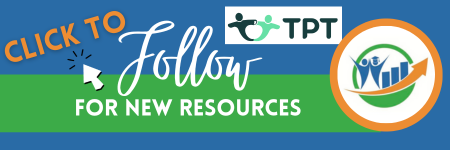Let’s Talk About “Turn and Talk”:
- Dr. Wendy Wells
- 5 hours ago
- 3 min read
3 Smart Shifts for More Purposeful Peer Dialogue
By Dr. Wendy Wells

We’ve all used “turn and talk” in the classroom, for good reason. It gives every student a voice, breaks up lecture time, and encourages participation. But over time, it can become more of a routine than a strategy.
The truth? Sometimes students aren’t actually talking about the content. Sometimes we’re not even sure why we’re asking them to talk.
Is it for discussion? Reflection? A quick check for understanding?
When we don’t define the purpose, the strategy loses power.
Why Student Talk Still Matters

Done well, peer discussion does far more than fill time. Decades of research—including work from Fisher & Frey and the Institute of Education Sciences—tells us that structured student talk can:
Deepen cognitive processing by encouraging students to explain and revise their thinking.
Build academic language and vocabulary through real use.
Foster engagement and accountability, especially when paired with clear expectations.
But none of this happens when talk is vague or unstructured. Without clear guidance, students may default to off-topic chatter or simply echo what they just heard.
Talking is only powerful when it’s purposeful.
Ask Yourself: What's the Real Reason for Turn and Talk?
Before you cue “turn and talk,” try clarifying your intention. Ask:
Am I using this to check for understanding?
Do I want students to reflect or synthesize?
Is this about rehearsing vocabulary or building confidence?
Will I listen in, or will students report out?
🎯 When your purpose is clear, you can choose a strategy that fits, and often, it's time to move beyond “just talk.”

Smart Shifts for More Purposeful Peer Dialogue during Turn and Talk
Here are three options that support deeper, more purposeful conversations, each matched to a specific instructional goal.
1. Digital Backchannel Chat
WHEN TO USE: You want to check for understanding or allow all voices to participate
TOOLS: Padlet, YoTeach, Google Docs
Instead of a few students talking while others coast, a digital backchannel allows every student to respond simultaneously. You can project responses live or review them later for formative insights.
🏅 Bonus: It’s perfect for quieter students who process better in writing.
2. “Three Voices” Protocol
WHEN TO USE: You want to develop collaborative thinking and listening
STRUCTURE: In trios, assign roles:
Speaker shares a thought
Responder builds or challenges
Synthesizer summarizes both out loud or in writing
This routine boosts listening and metacognition and ensures that talk moves beyond surface-level.
3. Gallery Walk with Commenting
WHEN TO USE: You want students to reflect, respond, and make connections
FORMAT: Display student work or prompts around the room (or digitally). Students rotate, leaving comments, questions, or sticky-note connections.
This quiet, reflective routine fosters broad exposure to peer thinking, and creates natural opportunities for meaningful feedback.

Bottom Line: Talk Should Always Have a Task
“Turn and talk” isn’t wrong. But when it becomes automatic, it loses its impact. Instead of defaulting to the same prompt structure, consider your purpose, then match it with a strategy that serves your instructional goals.
When talk is purposeful, everyone learns more.
Looking for Support?
Download this FREE Toolkit:

